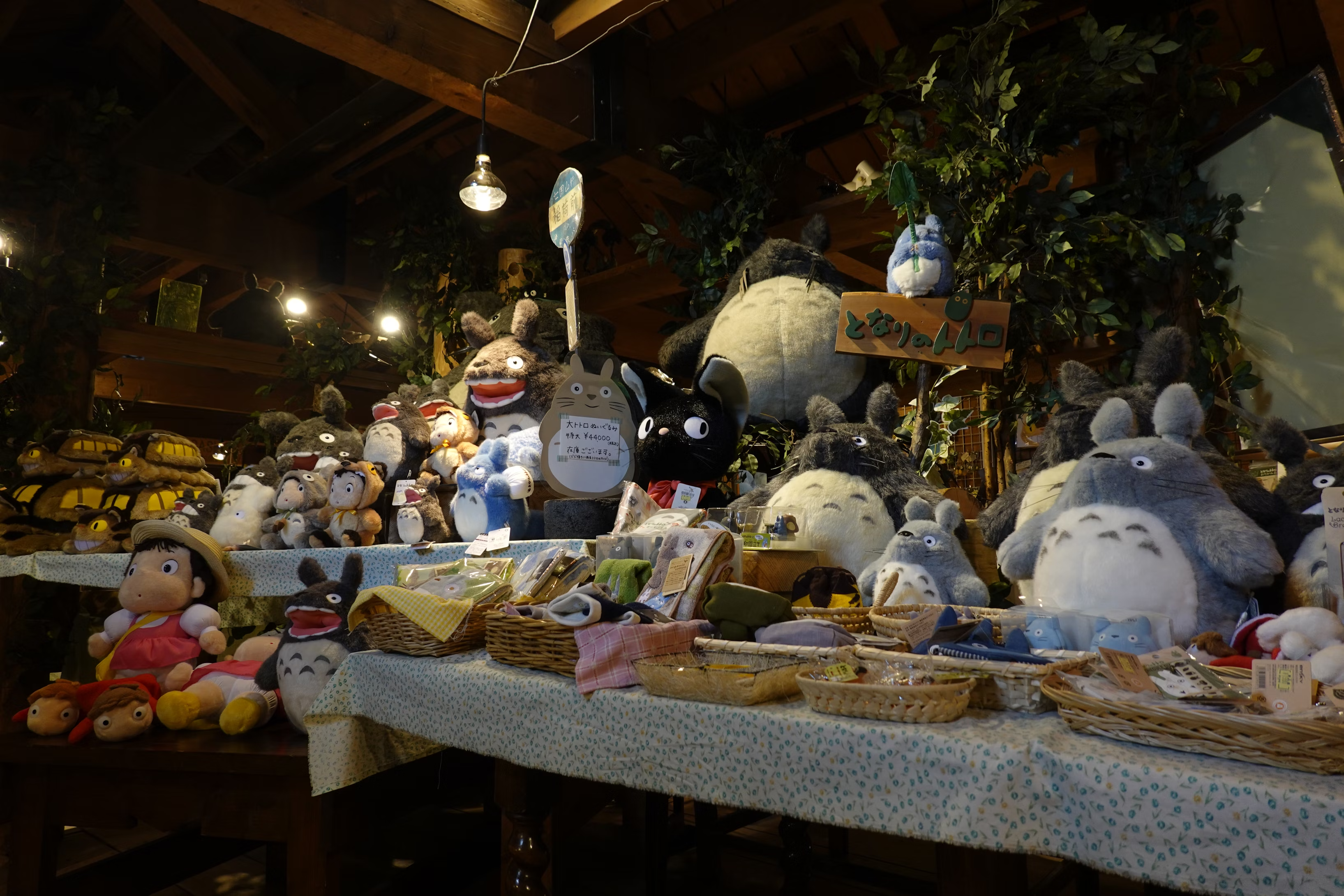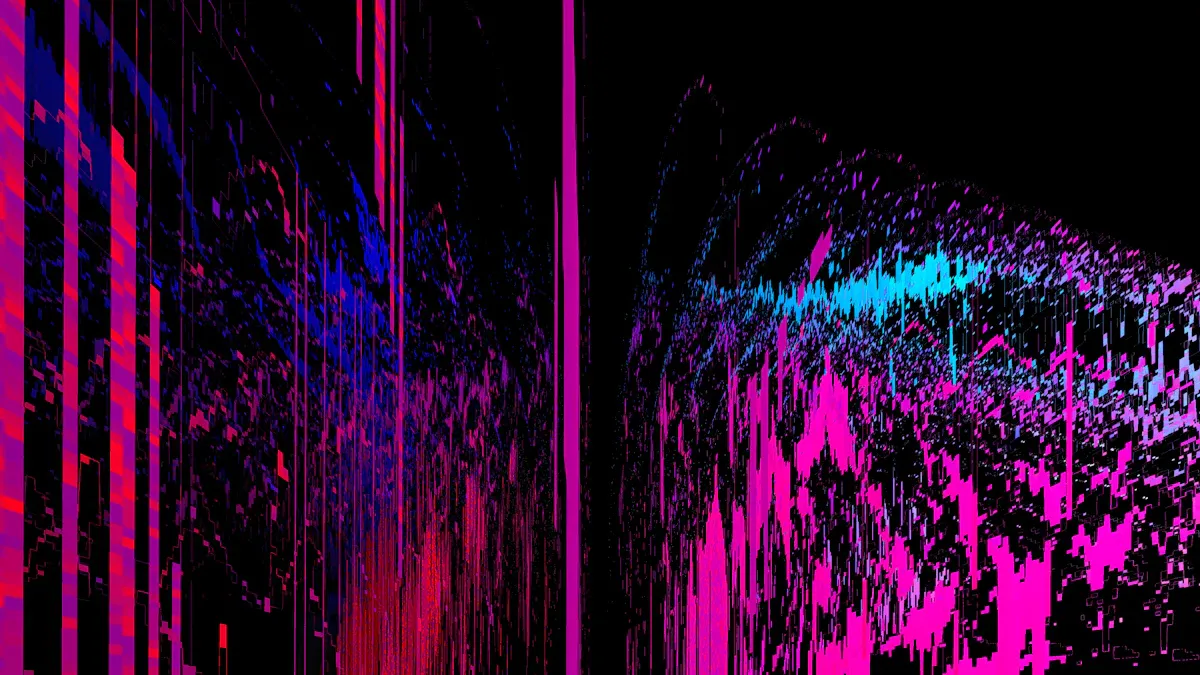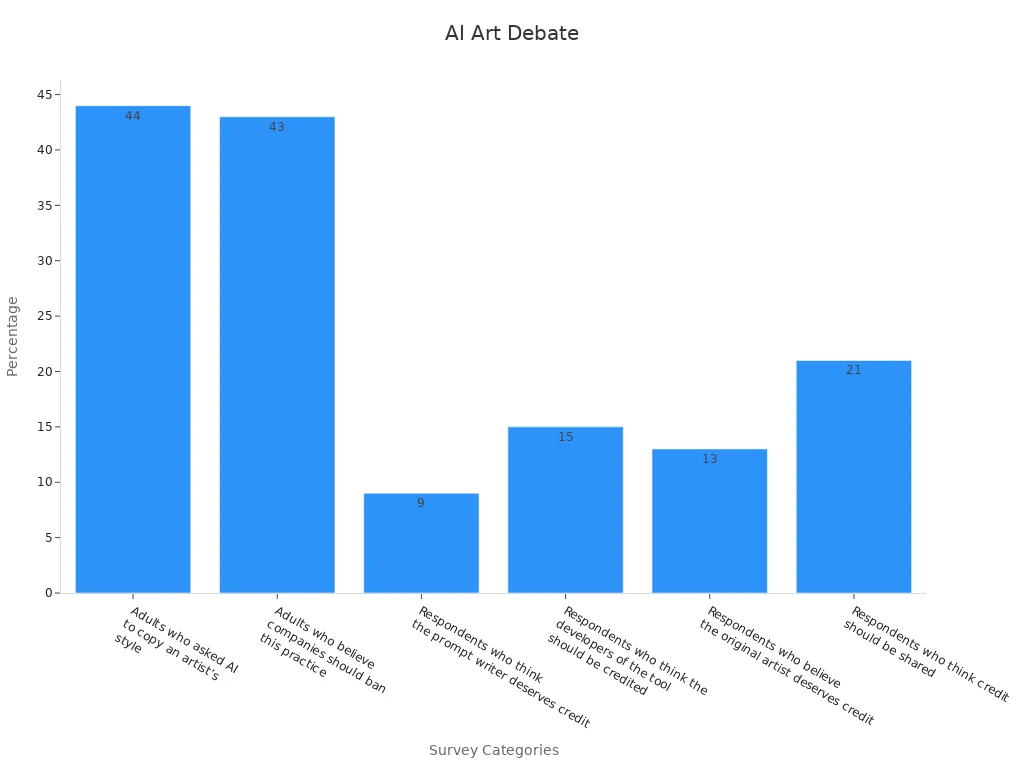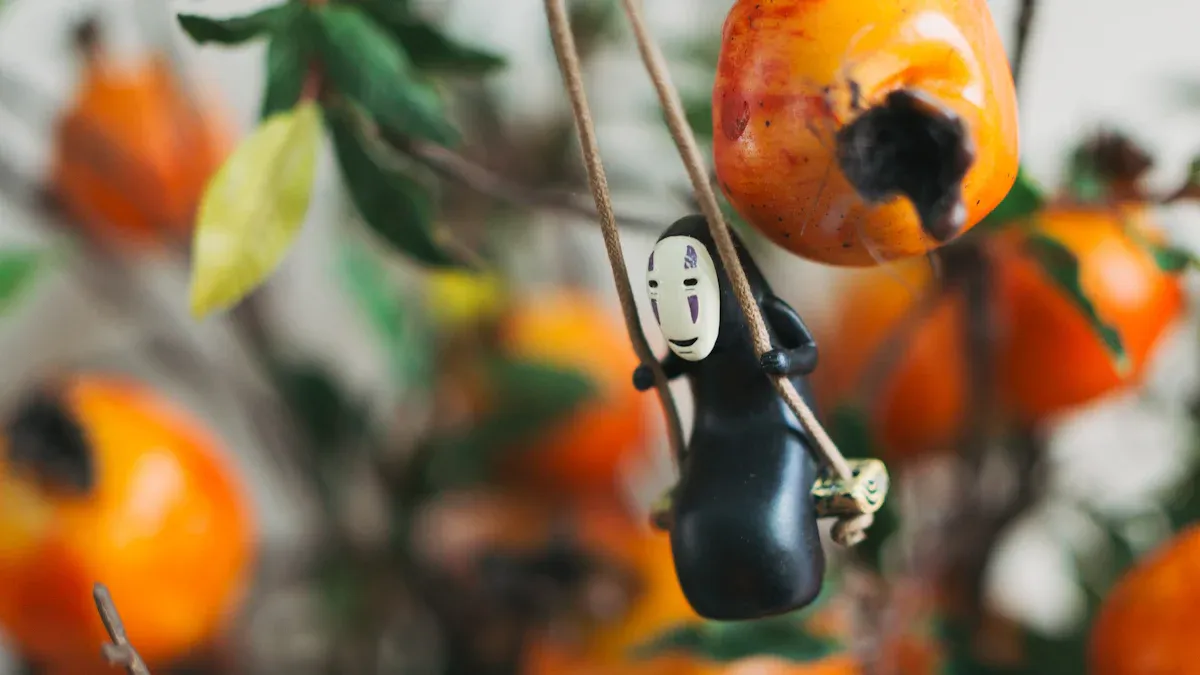Why Studio Ghibli AI Art Sparks Debate in 2025

Studio Ghibli AI art has become a flashpoint in the animation world. You might wonder why it stirs such strong feelings. On one hand, the ability of AI to replicate Ghibli’s iconic style has amazed many. On the other, critics argue that mass-producing art through AI diminishes its authenticity. Some believe this trend undermines the creativity that defines Studio Ghibli’s legacy. Even Hayao Miyazaki, the studio's co-founder, has openly criticized AI art, calling it a threat to genuine artistic expression. This debate reflects a broader concern about how technology reshapes art and its cultural value.
Key Takeaways
- AI art can copy Studio Ghibli's famous style, but people worry about its originality and creativity.
- The animation world is using AI more, making work faster but risking traditional skills and jobs.
- Hayao Miyazaki dislikes AI art, saying human feelings and skill are key in animation.
- AI makes art easier for everyone, but it might lower the value of skilled artists' work.
- The talk about AI in art shows bigger questions about creativity, ownership, and the future of art.
The Rise of AI in Animation

Image Source: unsplash
How AI is Reshaping the Animation Industry
You’ve probably noticed how quickly AI is transforming industries, and animation is no exception. AI tools now streamline production processes, making animation faster and more cost-effective. For example, AI automates tasks like 3D character rendering and storyboarding, which used to take weeks of manual effort. This efficiency allows studios to allocate resources more effectively, improving both quality and speed.
The numbers tell a compelling story. By 2024, the animation AI market reached $1.66 billion, and projections show it will grow to $23.60 billion by 2032, with a staggering annual growth rate of 36.2%. Around 60% of animation companies already use generative AI, which is expected to cut production costs by 30%. Even major players like Disney rely on AI for advanced tasks, such as creating lifelike facial animations. These advancements not only enhance the visual appeal of animations but also make them more personalized for audiences.
AI’s impact extends beyond efficiency. It democratizes creativity, enabling smaller studios and even individual creators to compete with industry giants. Tools like NVIDIA’s DeepSearch and AI-driven storyboarding software empower you to bring your ideas to life with minimal resources. However, this rapid adoption raises questions about the future of traditional artistry and the role of human animators.
Studio Ghibli’s Adoption of AI Art in 2025
In 2025, Studio Ghibli surprised fans by incorporating AI into its creative process. Known for its hand-drawn animation legacy, the studio’s decision marked a significant shift. OpenAI’s tools played a key role, allowing users to generate art in Ghibli’s iconic style. This move sparked both excitement and controversy.
On one hand, AI tools made Ghibli-style art accessible to a broader audience. You could create stunning visuals without formal training, opening doors for non-traditional artists. Fans praised the high quality of AI-generated images, which closely resembled the studio’s traditional works. On the other hand, critics worried about the ethical implications. Questions arose about copyright, as AI models trained on Ghibli’s art blurred the lines between inspiration and imitation.
The adoption of AI also highlighted concerns about job displacement. Automation threatened roles traditionally held by human artists, challenging the studio’s commitment to craftsmanship. Despite these challenges, Studio Ghibli AI art demonstrated how technology could redefine creativity, sparking debates about the balance between innovation and tradition.
Artistic Integrity and Studio Ghibli’s Legacy
The Tradition of Hand-Drawn Animation
Studio Ghibli’s legacy is built on the artistry of hand-drawn animation. You can see this dedication in films like Spirited Away, which won an Oscar for Best Animated Feature. It remains the only hand-drawn animated film to achieve this honor, standing apart from the dominance of computer-generated works. This achievement highlights the emotional depth and craftsmanship that define Ghibli’s creations.
Hayao Miyazaki, the studio’s co-founder, has always championed the human touch in art. He believes that animation should reflect the creator’s emotions and experiences. Critics agree, arguing that AI-generated art lacks the soul and authenticity that come from human effort. When you watch a Ghibli film, you’re not just seeing a story; you’re witnessing the culmination of countless hours of meticulous work by skilled artists.
However, the rise of AI challenges this tradition. AI tools can replicate Ghibli’s style, but they draw upon decades of human creativity without credit or compensation. This raises ethical concerns. Many describe this process as exploitative, as it borrows from the unique artistry of individuals without acknowledging their contributions. The fear is that the normalization of AI art could devalue the effort and skill that artists dedicate to their craft.
The Debate Over AI-Generated Art and Creativity
The introduction of Studio Ghibli AI art has sparked heated debates about creativity. On one side, you have supporters who see AI as a tool for democratizing art. These tools allow anyone to create visuals in Ghibli’s iconic style, even without formal training. This accessibility has inspired a new wave of creators who might not have had the resources to pursue traditional animation.
On the other side, critics argue that AI-generated art undermines the essence of creativity. They believe that true art comes from human imagination and experience, not algorithms. A survey revealed that 43% of adults think companies should ban AI tools that copy an artist’s style, while only 9% believe the prompt writer deserves credit for the output. This data shows how divided opinions are on the role of AI in art.
| Survey Result Description | Percentage |
|---|---|
| Adults who asked AI to copy an artist’s style | 44% |
| Adults who believe companies should ban this practice | 43% |
| Respondents who think the prompt writer deserves credit | 9% |
| Respondents who think the developers of the tool should be credited | 15% |
| Respondents who believe the original artist deserves credit | 13% |
| Respondents who think credit should be shared | 21% |

Miyazaki himself has criticized AI art, calling it a threat to genuine artistic expression. He argues that creativity should come from the heart, not from machines. This perspective resonates with many fans who feel that Studio Ghibli AI art compromises the studio’s legacy. While AI can mimic Ghibli’s style, it cannot replicate the emotional depth and human connection that make the studio’s works timeless.
Ethical and Legal Concerns of Studio Ghibli AI
Copyright Issues and AI Training Data
The use of AI in creating art raises serious copyright concerns. Many argue that AI models trained on Studio Ghibli’s works may have used copyrighted material without permission. This practice could violate copyright laws, especially if the AI replicates specific elements like characters or scenes. However, no concrete evidence has confirmed such violations yet.
In Japan, the Agency for Cultural Affairs addressed this issue in May 2023. It interpreted copyright law to allow AI to train on copyrighted works without needing permission. This decision shocked many creative professionals. The agency clarified that AI training is acceptable as long as it doesn’t directly copy ideas, emotions, or specific scenes from the original works. While this interpretation supports technological innovation, it leaves artists feeling vulnerable. You might wonder if this approach protects creativity or simply prioritizes AI development over artistic rights.
The Displacement of Artists and Labor Impacts
AI’s growing role in animation has also sparked fears about job losses. Many artists worry that automation will replace their roles, especially in areas like character design and 3D modeling. A recent study revealed that 62,000 entertainment jobs in California alone could face disruption due to AI within the next three years. Across the United States, this number rises to 204,000.
Entertainment companies are rapidly adopting AI. About 72% of these companies already use generative AI, and 75% of them have reported job reductions. This trend affects not only large studios but also smaller teams and freelance artists. You might see this as a cost-saving measure for studios, but it comes at the expense of human creativity. The fear of losing jobs has led many to question whether AI truly benefits the animation industry or simply prioritizes efficiency over artistry.
Hayao Miyazaki’s Criticism of AI Art
Hayao Miyazaki, Studio Ghibli’s co-founder, has been one of the most vocal critics of AI art. He once described AI technology as an “insult to life itself.” For Miyazaki, art is deeply personal. He believes that every stroke, imperfection, and detail reflects the artist’s humanity. This philosophy has shaped Studio Ghibli’s legacy, where hand-drawn animation captures the emotions and experiences of its creators.
Miyazaki’s criticism resonates with many fans who value the human touch in art. While AI can mimic Ghibli’s style, it cannot replicate the emotional depth that comes from human effort. You might agree that art loses its soul when machines replace the people behind it. Miyazaki’s stance reminds us of the importance of preserving the human element in creativity, even as technology advances.
Fan Reactions and Cultural Implications

Image Source: pexels
Support for Studio Ghibli’s Technological Innovation
Many fans have embraced Studio Ghibli’s decision to explore AI technology. You might see this as a bold step into the future, where innovation meets creativity. Supporters argue that Studio Ghibli AI allows the studio to reach new audiences and experiment with storytelling in ways that were previously impossible. By using AI, the studio can produce high-quality visuals faster, which could mean more frequent releases of the films you love.
Some fans also appreciate how AI tools make Ghibli’s iconic style accessible to everyone. Aspiring artists can now create works inspired by the studio without needing years of training. This democratization of art has sparked a wave of creativity among fans, who share their AI-generated Ghibli-style art online. For many, this represents a new era of collaboration between technology and imagination.
Backlash Over the Loss of Tradition
Despite the excitement, not everyone supports this shift. You might feel that Studio Ghibli’s reliance on AI undermines its legacy of hand-drawn animation. Critics argue that the studio’s charm lies in its human touch, where every frame reflects the artist’s emotions and effort. They worry that AI-generated art lacks the soul and authenticity that make Ghibli films timeless.
Fans have also expressed concerns about the potential loss of jobs for animators. You might wonder if automation will replace the skilled artists who bring Ghibli’s stories to life. This fear has led some to view Studio Ghibli AI as a betrayal of the studio’s commitment to craftsmanship. For these fans, tradition holds more value than technological progress.
Broader Cultural and Artistic Impacts of AI Art
The rise of AI art has sparked debates that go beyond Studio Ghibli. You might notice how AI is reshaping the way people think about creativity and ownership. Some believe that AI democratizes art, making it more accessible to creators worldwide. Others argue that it devalues the work of human artists by prioritizing efficiency over originality.
Culturally, AI art challenges the idea of what it means to create. You might ask yourself, “Can something made by a machine truly be called art?” This question has led to discussions about the role of human experience in creativity. As AI continues to evolve, it will likely influence not just animation but also other forms of artistic expression. The debate over Studio Ghibli AI reflects a larger conversation about how society balances tradition with innovation.
Studio Ghibli AI art highlights the challenges of blending innovation with tradition in animation. You might notice how AI reshapes creativity, but it also raises concerns about originality and authenticity. Critics argue that rapid AI production could overshadow traditional craftsmanship and diminish appreciation for human artistry. Others worry that AI-generated works lack the emotional depth rooted in human experience. As this debate evolves, you must consider whether AI can coexist with traditional methods or if it will redefine the creative landscape entirely.
FAQ
What is Studio Ghibli AI art?
Studio Ghibli AI art refers to artwork generated using artificial intelligence tools that replicate the iconic style of Studio Ghibli. These tools analyze existing Ghibli works to create new visuals. While innovative, this approach has sparked debates about creativity, ethics, and the studio’s artistic legacy.
Why do some fans oppose AI-generated Ghibli art?
Fans oppose AI-generated art because they believe it lacks the emotional depth and authenticity of hand-drawn animation. Many feel that Studio Ghibli’s charm comes from human effort and creativity, which AI cannot replicate. Concerns about job losses for artists also fuel this opposition.
How does AI impact traditional animation jobs?
AI automates tasks like character design and rendering, reducing the need for manual labor. This efficiency can lead to job displacement for animators and artists. Many worry that automation prioritizes cost-cutting over preserving the craftsmanship and artistry of traditional animation.
Can AI truly create art?
AI can mimic artistic styles and produce visually stunning works, but many argue it lacks true creativity. Art reflects human emotions and experiences, which machines cannot replicate. You might see AI as a tool for creation, but its outputs often lack the soul of human-made art.
What does Hayao Miyazaki think about AI art?
Hayao Miyazaki, Studio Ghibli’s co-founder, strongly opposes AI art. He believes it insults the essence of life and creativity. For Miyazaki, art should come from the heart and reflect human experiences, not algorithms. His criticism highlights the importance of preserving the human touch in animation.